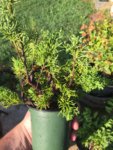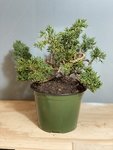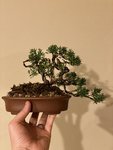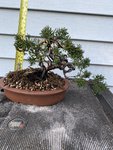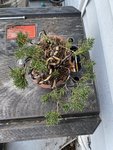Tidal Bonsai
Omono
I got these unidentified Juniper whips from a club member. He thought they were Kishu, but they look like regular Shimpaku to me. Any ideas?
I twisted them both up, and am going to ground-grow once the weather cools down.
I twisted them both up, and am going to ground-grow once the weather cools down.



